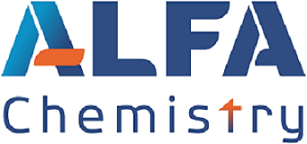| Alfa Chemistry | |
|---|---|
| Country: | United States |
| Tel: | 5166625404 |
| E-mail: | support@alfa-chemistry.com |
| QQ: | |
| Skype: | Chat Now! |
Carbon Foam
Release time: 2024-01-16
Carbon foam, also known as reticulated vitreous carbon (RVC) foam, is a stiff, porous structure formed from a web of carbon atoms. It has attracted increasing attention from academic communities and industry because of its unique 3D porous structure and excellent performance, such as low density with high mechanical strength, high electrical conductivity, tailorable thermal conductivities, high adsorption, electromagnetic shielding, ablation resistance, and large surface area. Carbon foam is an enabling technology for a host of next-generation material systems and components. It can be used as the core material in a structural composite that makes ships more fireproof, as a firewall in airplanes and as energy absorbing structural components in automobiles. The foam material performs well in a marine environment.
Basic Parameters
Pore size: 0.01-6mm
Density: 0.2-1.0g/cm3
Porosity: 30-80%
Compressive strength: 8-12MPa
Compressive modulus: 300-620MPa
Tensile strength: 2-5MPa
Tensile modulus: 300-500MPa
Thermal expansion coefficient: 5.0ppm/℃
Resistivity: 1.0×10-2-10-5Ω·m
Maximum operating temp.: 600℃(in air), 3000℃(in inert gas)
Size: 200*300mm

Note: The other sizes can be manufactured in accordance with the clients'request.)
Special Properties
Applications
Carbon foams are 3D-structured porous materials that have been attracting increasing attention due to their versatile properties and wide range of applications. Typical applications are as follows:
Carbon foam can meet the requirements of class A fire ratings, and along with the features of light weight, non-toxic, easy to operate and long life, it can be used as flame retardant material in places with high fire protection requirements, such as subway tunnel, library, computing center, chemical plant central control room, fire door sandwich materials, etc.

With 3D-structure, carbon foams have potential applications in catalytic chemical reactions due to their large geometric surface areas and interconnected pores, which provide well-defined pathways allowing reactants to easily access active sites. Carbon foams can simplify the catalytic process and reduce the costs related to packed-bed or slurry catalytic material.

Carbon foam is with the advantages of large specific surface area and high conductivity and in addition, the carbon foam possesses suitable interlayer spacing in short range which is flexible to accommodate the deformation of carbon layer caused by the ion insertion and deinsertion at the charge and discharge state. Thus, carbon foam can be used as the battery-type cathode and the capacitor-type anode.

